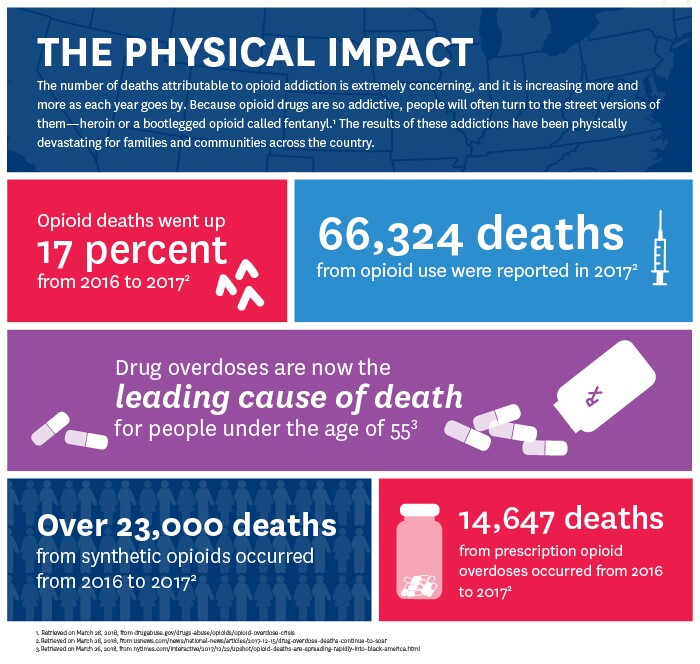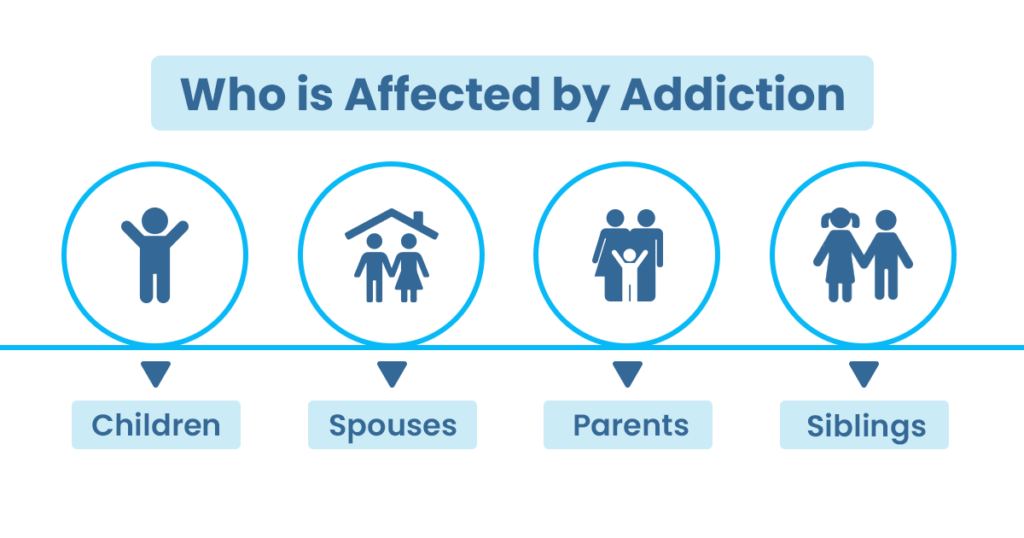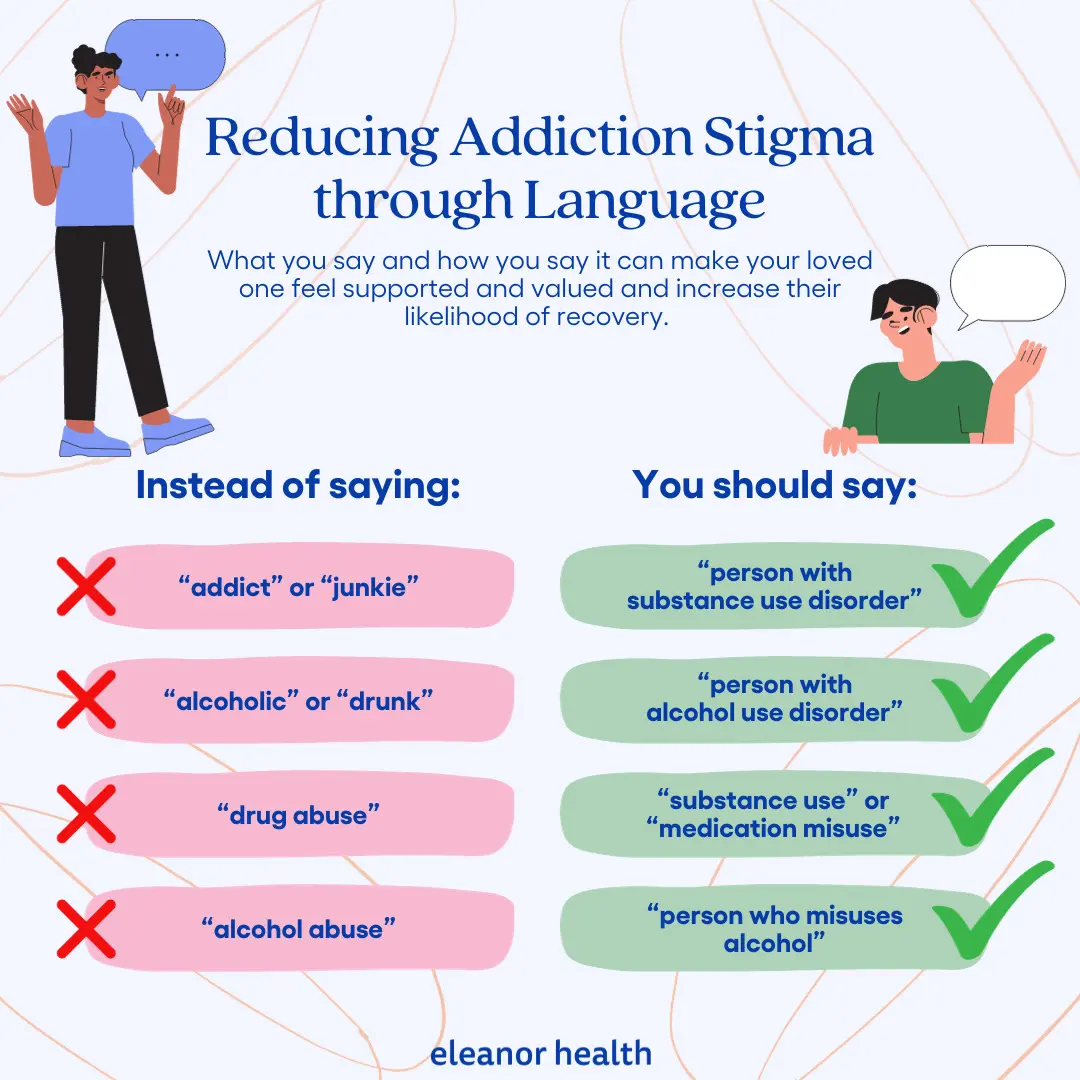Understanding the Opioid Epidemic in the
United States
Overview
In the United States, overdose mortality is primarily caused by illicit and prescription drug use (Singh et al., 2019). Overdose mortality rates have more than tripled over the past 2 decades (Singh et al., 2019).
Example of an illicit drug: Heroin (often times laced with highly addictive fentanyl)
Examples of prescription drugs (natural and synthetic): Oxycodone, morphine, tramadol, hydrocodone, codeine, and fentanyl
The opioid epidemic has affected various populations, geographic areas, and socio-economic groups (Singh et al., 2019). The current opioid epidemic in the United States has been declared as a national public health crisis (Singh et al., 2019).
Causes of the opioid epidemic: Overprescribing of pain medications, synthetic manufacturing of drugs, advertisement of opioids by pharmaceutical companies, and how substance abuse disorder alters brain chemistry

How does the Opioid Epidemic Affect Families?
In 2017, 46% of adults in the United States reported having a family member or confidant that has a current or past addiction to drugs (O’Shay-Wallace, 2019). With this, there may be social and health implications by having a family member or close relative with a substance abuse disorder (O’Shay-Wallace, 2019).
Implications
1. Increased risk of experiencing depression, anxiety, stress, and the inability to eat as they manage having a family member with substance abuse disorder (O’Shay-Wallace, 2019).
2. Children with a parent(s) who has a substance abuse disorder is more likely to be diagnosed with ADHD (O’Shay-Wallace, 2019).
3. Teenagers with a parent(s) who has a substance abuse disorder is more likely to experience negative temperament, behaviors, and self-directed feelings (O’Shay-Wallace, 2019). They are also more likely to engage in sexual behaviors and alcohol/drug use compared to teenagers who don't have a parent(s) with a substance abuse disorder (O’Shay-Wallace, 2019). Lastly, teenagers are more likely to have suicidal thoughts and attempts (O’Shay-Wallace, 2019).
4. Family dysfunction, trauma, violence, and financial struggles


Stigma and Addictions
A United States survey revealed overall negative emotions towards people with a substance abuse disorder compared to those with a mental illness (O’Shay-Wallace, 2019). According to the survey, they are also more likely to socially distance themselves from people with addictions compared with those who have a mental illness (O’Shay-Wallace, 2019).
Specific Stigmas (Societal Perspectives)
1. People with addictions are viewed as criminals and are dangerous
2. Seen as morally weak and the stigma that they choose to engage in substance abuse behaviors
3. The belief people with addictions are responsible for their choices and lack accountability for their actions
4. The use of inappropriate terms such as "junkies, crackheads, day walkers, pill poppers, and the losers of society"
So....Let's be a part of the Solution and not the Problem
But How?
Primary Prevention: Awareness, communication, education, counseling, and reducing stigma
Secondary Prevention: Screening for high-risk populations, addressing social determinants of health, and clinician medication education for prescribing
Tertiary Prevention: Medication-assisted treatment, psychological interventions, and addictions counseling
(Salmond & Allread, 2019).

Harm Reduction Strategies/Programs for Active Drug Users
1. Widespread naloxone distribution
2. Needle or syringe exchange programs
3. Pharmacy sale exchange programs
4. Medication-assisted treatment
5. Legalized safe injection houses
6. Safe disposal of unused opioids
(Salmond & Allread, 2019).
Treatment and Recovery
Medication Treatment
According to one article, only a minority of people receive inpatient treatment for substance abuse disorder (Mojtabai et al., 2019). People are more likely to receive outpatient treatment. Medication outpatient treatment is cost-effective, accessible, efficient, and is approved by the Food and Drug Administration for the long-term management of opioid use disorder (Mojtabai et al., 2019). These medications include methadone, buprenorphine, and extended-release naltrexone.
Conclusion
Recovery is possible, and the process is not linear. Therefore, encourage others, spread awareness, and lend a helping hand.
And as Andrew Allen said, don't lose hope
Thank you for reading my blog. I look forward to your comments.
-Cassidy Cox RN
References
Google Images
Mojtabai, R., Mauro, C., Wall, M. M., Barry, C. L., & Olfson, M. (2019). Medication treatment for opioid use disorders in substance use treatment facilities. Health Affairs, 38(1), 14–23. https://doi.org/10.1377/hlthaff.2018.05162
O’Shay-Wallace, S. (2019). “We weren’t raised that way”: Using stigma management communication theory to understand how families manage the stigma of substance abuse. Health Communication, 35(4), 465–474. https://doi.org/10.1080/10410236.2019.1567443
Salmond, S., & Allread, V. (2019). A population health approach to america’s opioid epidemic. Orthopaedic Nursing, 38(2), 95–108. https://doi.org/10.1097/nor.0000000000000521
Singh, G. K., Kim, Jr., I. E., Girmay, M., Perry, C., Daus, G. P., Vedamuthu, I. P., De Los Reyes, A. A., Ramey, C. T., Martin, Jr., E. K., & Allender, M. (2019). Opioid epidemic in the United States: Empirical trends, and a literature review of social determinants and epidemiological, pain management, and treatment patterns. International Journal of Maternal and Child Health and AIDS (IJMA), 8(2), 89–100. https://doi.org/10.21106/ijma.284
No comments:
Post a Comment